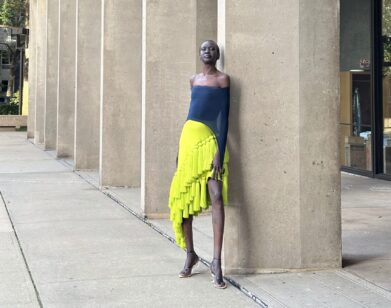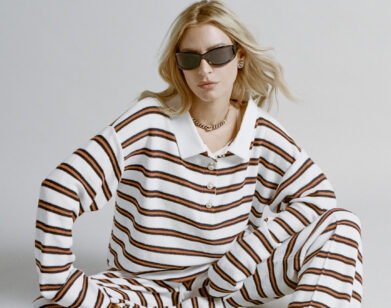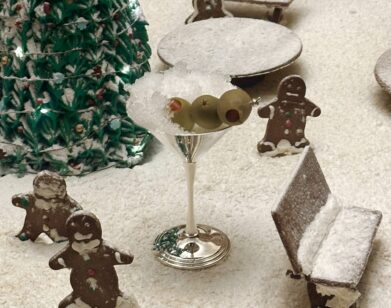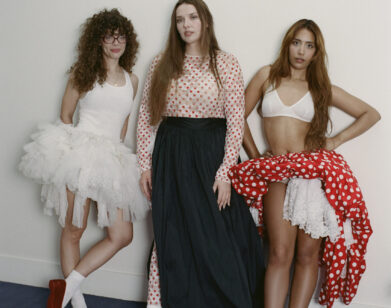The Art of New York Fashion Week
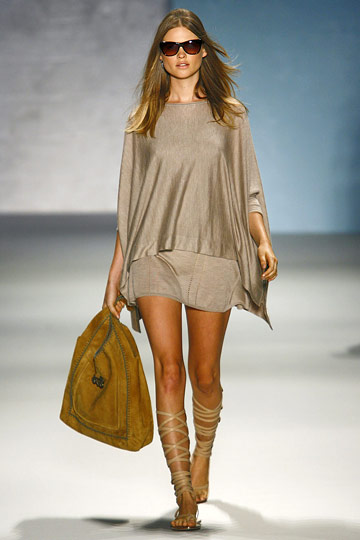
EGON SCHIELE; ISABELLA TONCHI
This past New York Fashion Week, it seems that the city’s famed museums and galleries finally left their mark. The recent spring/summer collections traded pointed preachiness for whimsical concepts that suggest American designers have been thinking about art exhibitions, the aesthetic past, and cultural history. Gone are the days of vaguely referencing Pop art or borrowing the palettes of Expressionism; representatives from the New York set have specific, highly specialized inspirations in mind, from regional movements to a particular artwork. Whether it be referencing a print or imitating similar volumes, citing an artistic moment is clearly in vogue.
Isabella Tonchi and Egon Schiele
The Florence-born designer got major publicity for showing her mature, cream-and-beige toned shirtdresses and two-pieces at Milk Studios. Inspired by an exhibition of the Viennese painter that she had seen in Milan, Tonchi mimicked Schiele’s quiet sexuality in long, billowing floor-length dresses and subtly revealing cotton halter tops. (She also paid homage to his skin tone palette with white linen and silver-kissed brocade). Using Schiele’s penchant for body distortion to her advantage, Tonchi’s silhouettes were long and lithe and, like the art that inspired her, she created a collection both sensual and self-possessed.
Alexandre Herchcovitch and Mark Rothko
Alexandre Herchcovitch’s spring/summer collection was an experiment in color that recalled the work of Mark Rothko, who he cited as an inspiration. Herchovitch’s runway included hints of Mondrian (a predecessor of Rothko’s) and sunset-toned dresses with their origami folds and boxy shoulders. The hues used in Rothko’s yellow and gold reappeared in several of the looks; invoking a great color master only cemented the designer’s multitoned expertise.
Jason Wu and Beatriz Milhazes
While he became a household name as a result of a certain one-shouldered white gown, Jason Wu’s sharp tailoring got a fun burst of color thanks to his usage of Brazilian artist Beatriz Milhazes’s bold, chaotic prints. Wu also looked to fashion illustrator Rene Gruau (which can be seen in his ode to turbans and volume), but the “Beatriz” print, which playfully stretched across a sheath and dominated several tops, was a more literal tribute.
Ohne Titel and Utagawa Kuniyoshi
After the uptown-meets-bondage collection of of fall, Ohne Titel’s polished and graphic show pleased artsy onlookers hoping for another strange experiment in draping, layers, and accessories. The gals focused their tri-colored vision, which existed almost entirely in cobalt blue, black and white, from an exhibit at the Japan Society on Japanese printmaker Utagawa Kuniyoshi. Ohne Titel’s models may have been vaguely samurai-like, but it was the tangerine touches–from the lips to the jewelry crafted by artist Tauba Auerbach–that made the reference clear.
Derek Lam and California Minimalism
Inspired by a show he saw at Chelsea’s David Zwirner Gallery, which included a piece by Larry Bell, Derek Lam’s collection referenced the experimental and relaxed simplicity of mid-century West Coast artists like Dan Flavin, Robert Morris, and the aforementitoned Bell. Last fall, Lam also looked west, but his offerings were much tighter this go-around, with crisp, seventies-era bell sleeves and cuffs, controlled patterns, and neutral tones. Like the artists who moved him, Lam’s geometry and precision translated into effortless leisure.

